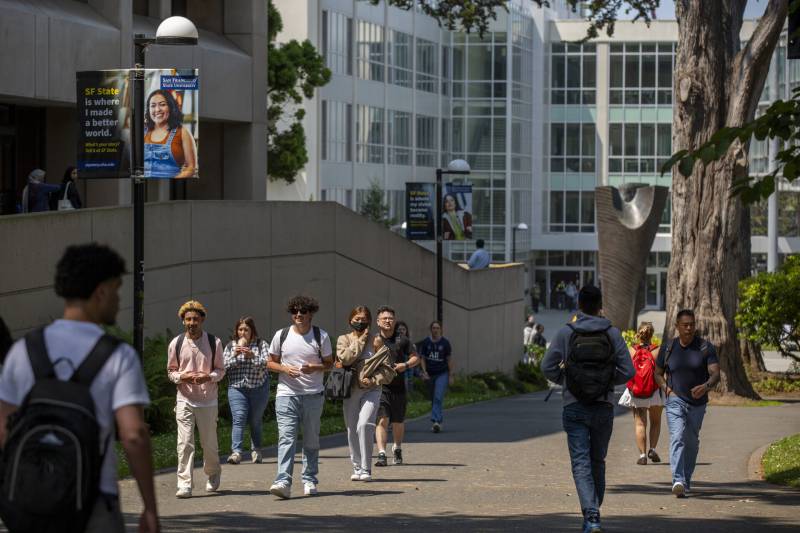The new rules would also make students eligible for the Cal Grant even if they enroll directly into a university more than a year after finishing high school, removing the time-out-of-high school restriction.
However, the overhaul would also lower the income ceiling, excluding about 48,000 students who are now eligible for it. For example, under current rules, the income ceiling for a family of four with a dependent student going to college is $131,000. It would drop to $76,000 under the Cal Grant overhaul, Qing said at a March legislative hearing.
Also, university students would no longer be eligible for some cash awards, with the expectation that campus financial aid programs pick up the slack. At the same time, some university students who now only receive a $1,650 cash award as freshmen would instead be granted the tuition waiver, which is a higher value.
Also, under the new Cal Grant rules, an additional 45,000 lower-income students who are parents would be eligible for the award, and students with dependent children could receive an additional $6,000.
Most of the new awards would go to community college students
The agency that oversees financial aid, the California Student Aid Commission, projects that by the end of the decade, 120,000 more community college students will receive a Cal Grant annually under the overhaul.
It’s a different story for UC students. Under existing rules, the number of UC students receiving a Cal Grant is projected to grow by 17,000 by 2030. But under the overhauled Cal Grant, only 5,500 more UC students would get the award by then.
Still, students at UC, which has the highest tuition, would collectively receive more Cal Grant dollars than students elsewhere.
Assemblymember David Alvarez, a Democrat from Chula Vista, noted at a March hearing that UC is enrolling a smaller percentage of lower-income students than in the past, which he thinks is the reason why the system is projected to see fewer of its students acquire a Cal Grant under the overhaul.
“Let’s identify more of our California students that are lower income to be able to attend our UC system,” Alvarez said. “And therefore, I think Cal Grant can be a net benefit for the UC system.”
Alvarez, who leads the Assembly’s budget subcommittee on education, wants to see the Cal Grant expanded in some capacity by July when the state’s 2024–25 budget begins. “We know it will happen, but we are in a budget situation where we need to think about how that is going to happen. But I believe it must start this year,” he said.
Last month, state senators asked the Student Aid Commission to float some ideas for a partial rollout that limits costs.
One idea is to increase the size of the community college cash awards this year so they’re tied to inflation — one of the changes that would kick in under a full Cal Grant overhaul anyway.
Another option is to expand the number of students who are also parents receiving the cash award but lower the amount each student receives. An official with the commission, Jake Brymner, told lawmakers at a March hearing that doing so would mean 45,000 more students receive the cash award but that everyone would get between $3,000 and $4,000 — less than the $6,000 students get now.
Brymner also suggested limiting the Cal Grant for community college students to those who meet the current 2.0 GPA rule.
Finally, lawmakers could overhaul the Cal Grant but lower the income ceilings even more to limit costs, Brymner said. That idea is likely the least popular.
“I would hate to see a reduction to the income ceilings,” Noelia Gonzalez, Cal State’s director for financial aid programs, said at the same hearing. She said it would come at a particularly poor time for middle-class students.
Because of the state’s budget deficit, Newsom favors nixing a planned one-time increase to the Middle Class Scholarship, a relatively new financial aid program funded at around $630 million in 2022–23 and $860 million in 2023–24. Last year, lawmakers had promised to put an additional $60 million into the scholarship. Instead, Newsom wants to cut it back to around $630 million.
